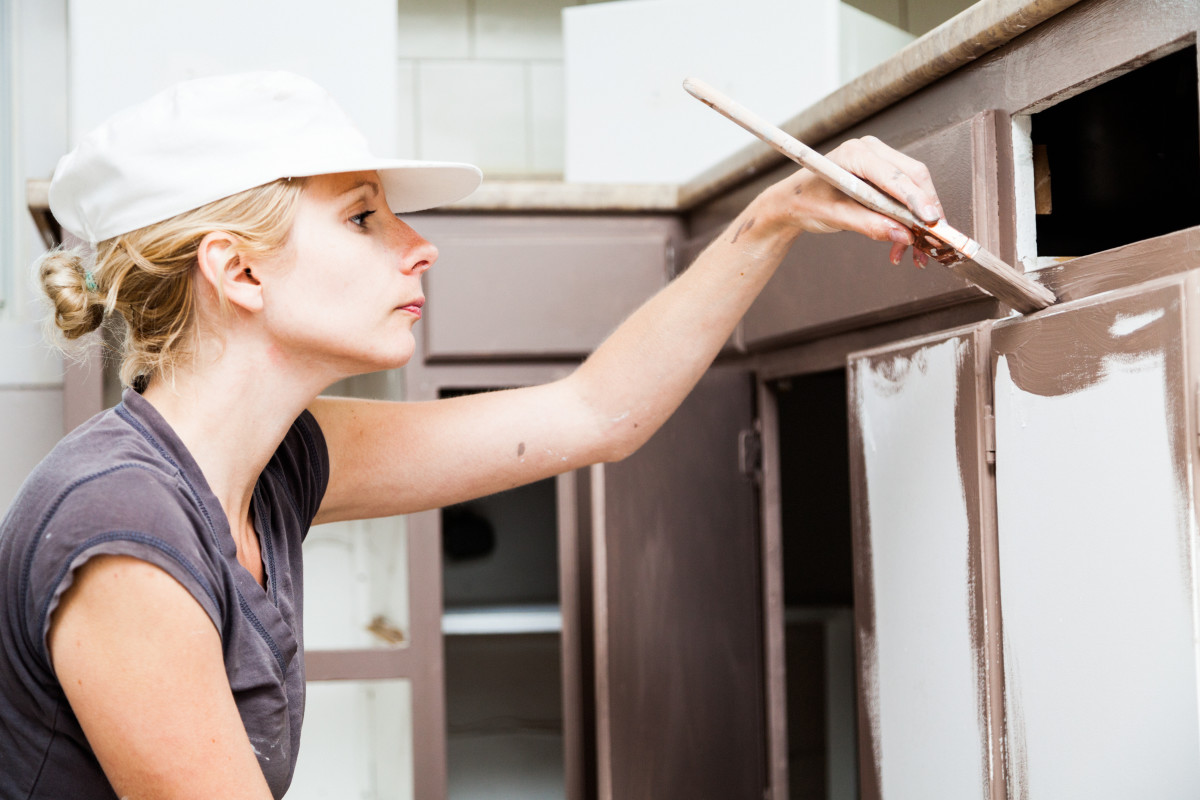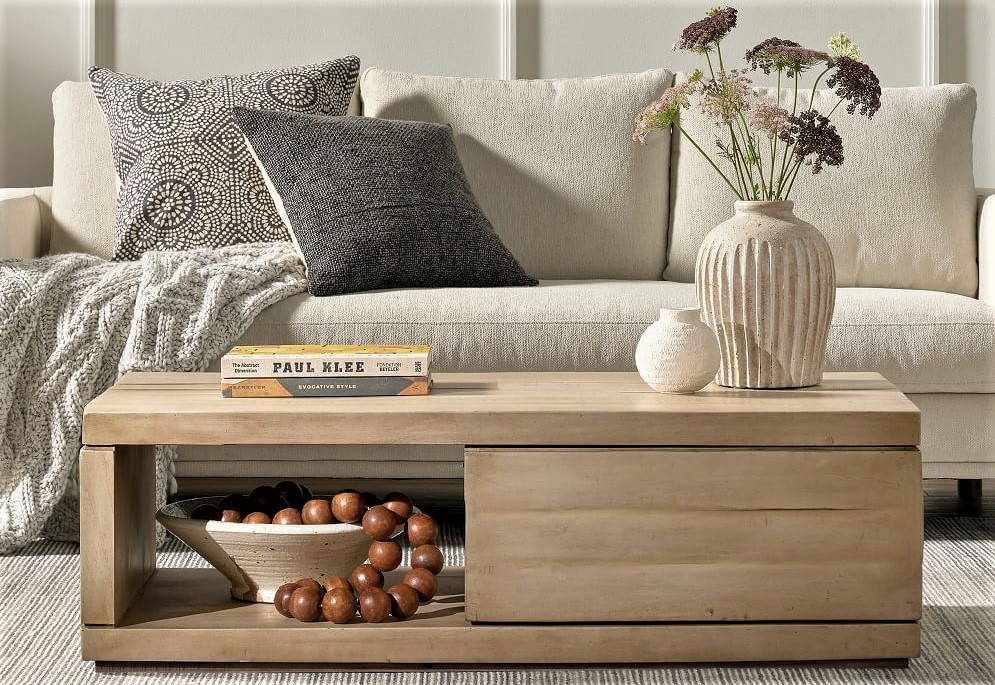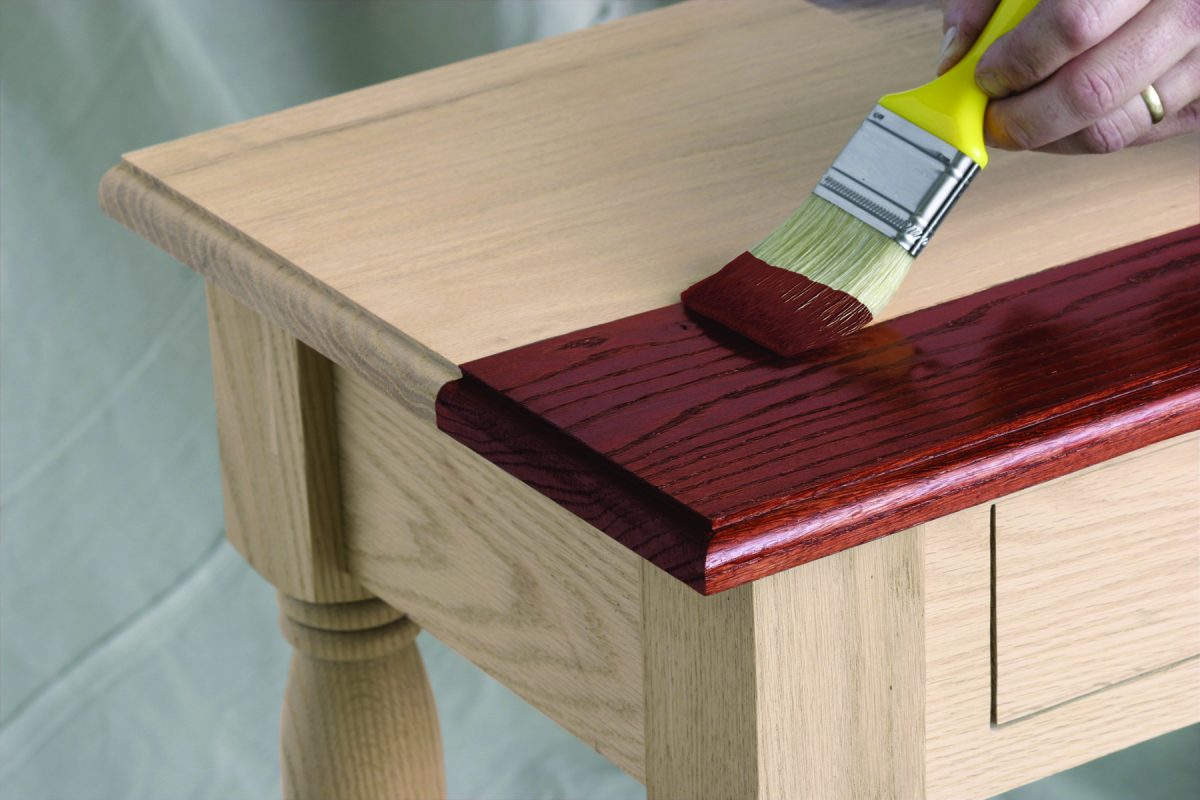Creating captivating visuals in living spaces often begins with the mastery of surface enhancement. The process of rejuvenating and personalizing various elements within your interiors presents an exciting opportunity to showcase your individual style. With the right techniques, even the most ordinary pieces can be transformed into extraordinary focal points, breathing new life into your surroundings.
Engaging in the transformation journey not only enriches the aesthetic appeal but also nurtures a sense of accomplishment. Understanding the essentials of this craft can empower you to achieve stunning results. This exploration delves into materials, methods, and tips that will assist you in your quest for elegance and charm, enabling you to create cherished pieces that tell your unique story.
Through careful selection and application, you will discover how to enhance texture and color, making surfaces a delightful testament to your creativity. Whether you prefer a rustic vibe or a sleek, modern finish, each approach provides a canvas for expressing your vision. Join us as we unveil insightful techniques that will elevate your decor while ensuring durability and functionality.
Choosing the Right Stain for Wood
Selecting the appropriate color and finish for wood surfaces is crucial to enhancing their natural beauty and ensuring durability. The right choice not only transforms the appearance but also protects the material from wear and tear, moisture, and other environmental factors. Understanding various options available on the market can make the decision-making process more manageable.
Types of Stains
Before diving into specific products, it’s essential to familiarize yourself with the primary types of stains:
-
Oil-based stains: These penetrate deeply and provide a rich, long-lasting finish. They are known for their ability to highlight the grain.
-
Water-based stains: These dry quickly and have lower levels of volatile organic compounds (VOCs). They offer easy cleanup and are less odoriferous.
-
Gel stains: These are thick and ideal for vertical surfaces or tricky areas, providing a more consistent application.
Factors to Consider
When choosing a stain, consider the following factors:
-
Wood type: Different types of wood absorb stains differently. Test your options on a small area to see how they react.
-
Desired color: Consider the overall aesthetic you wish to achieve. Samples can help visualize the outcome before full application.
-
Finish type: Decide whether you want a matte, satin, or gloss finish. This choice can significantly impact the final look.
-
Environmental impact: Opt for products with low or zero VOCs for a healthier indoor environment.
Taking these aspects into account will guide you towards making an informed decision that enhances the wood while meeting your specific needs.
Essential Tools for Finishing Tabletops
Achieving a polished and visually appealing surface requires the right equipment. The selection of proper instruments can significantly enhance the outcome of your project, making it essential to understand which items best serve each task. Below is a list of crucial implements that will aid in the transformation process.
-
Sandpaper: Various grits, from coarse to fine, are necessary to prepare the surface adequately.
-
Sanding Block: This tool provides a consistent flat surface for even sanding.
-
Prepares the wood for application, promoting an even absorption of the finish.
-
Stain or Finish: Choose from water-based or oil-based products, depending on the desired effect.
-
Brushes and Applicators: Select high-quality brushes or foam applicators for a smooth, even application.
-
Lint-Free Cloths: Essential for wiping off excess finish and ensuring a clean application.
-
Painter’s Tape: Helps protect edges and create clean lines during the finishing process.
-
Respirator Mask: Safety gear to protect against fumes and dust while working.
-
Protective Gloves: Keeps hands safe from chemicals and ensures a neat application.
-
Drop Cloths: Used to protect floors and surfaces from spills and drips.
By gathering these tools, one can ensure a smoother workflow and a more aesthetically pleasing result. Taking the time to assemble the right equipment will greatly contribute to the success of any enhancement project.
Step-by-Step Staining Process Explained
The process of enhancing the appearance of wooden surfaces can transform an ordinary piece into a stunning focal point. By following a clear sequence of actions, one can achieve a rich, lasting finish that showcases the natural beauty of the wood grain. Understanding each stage of this journey not only fosters better results but also makes the undertaking enjoyable and rewarding.
Begin by selecting a suitable workspace, ensuring that it is well-ventilated and free of dust. Gather all necessary materials such as sandpaper, cloths, a brush or sponge, and the stain itself. Proper preparation is vital to achieving an even color and smooth texture.
Next, prepare the wooden surface by sanding it gently with fine-grit paper. This step removes imperfections and opens up the grain, allowing the application to penetrate more effectively. Always sand in the direction of the grain to prevent scratches and achieve a polished finish.
After sanding, thoroughly clean the area to eliminate any dust particles. A damp cloth can help in this regard. Allow the surface to dry completely before proceeding to the next step.
Now, it’s time to apply the chosen stain. Use a brush or sponge to evenly distribute the product across the surface. Work in small sections to ensure that the stain does not dry before you have the chance to evenly spread it. Always follow the manufacturer’s instructions regarding drying times and application techniques.
Once the initial coat is applied, assess the color and coverage. If a deeper hue is desired, allow the first layer to dry completely before applying additional coats. It’s essential to check that the wood has adequately absorbed the stain to achieve a rich, uniform appearance.
Finally, finish with a protective sealant to ensure durability and enhance the overall aesthetic. Whether opting for a glossy, satin, or matte finish, this final layer will not only provide protection but also elevate the visual impact of the project.
Techniques for Achieving a Smooth Finish
Creating an elegant surface that feels as good as it looks requires attention to detail and a few essential methods. Mastering these techniques not only enhances the visual appeal but also ensures longevity and durability. Several steps can be taken to achieve that flawless appearance, all focusing on preparation, application, and refinement.
First, preparation is crucial. Begin with sanding the surface carefully using progressively finer grits of sandpaper. Start with a coarse grit to eliminate imperfections, then gradually move to finer grits to prepare the wood. This process creates a smoother canvas, allowing finishes to adhere better and achieve a glass-like quality.
Next, selecting the right applicator can significantly impact the outcome. Brushes, foam applicators, or even cloths each have their advantages. Brushes are excellent for precise applications, while foam can help avoid brush strokes. Regardless of the choice, applying in thin, even layers is essential, as thicker applications often result in drips and uneven surfaces.
Additionally, airflow and humidity levels should be considered during the application process. Working in a well-ventilated area with appropriate humidity can prevent issues such as bubbling or streaking. Allow ample drying time between coats, as this helps each layer bond effectively, leading to a smoother final surface.
Lastly, after the final coat has dried, polishing can elevate the finish even further. Using a fine-grit sandpaper or polishing compound gently can enhance the gloss and smoothness. A soft cloth or buffing pad will help achieve that radiant shine, rounding out the entire process for a stunning, professional-grade appearance.
Common Mistakes and How to Avoid Them
When it comes to enhancing surfaces, there are frequent pitfalls that can lead to unsatisfactory results. Understanding these errors is crucial for achieving a refined finish. Below, we highlight typical missteps and offer practical solutions to ensure a flawless outcome.
|
Mistake |
How to Avoid |
|---|---|
|
Skipping Preparation |
Always clean and sand the surface thoroughly before beginning any application process. |
|
Using Poor Quality Products |
Invest in high-quality materials to guarantee durability and a superior finish. |
|
Ignoring Drying Times |
Follow the recommended drying times strictly to prevent smudging or incomplete curing. |
|
Applying Too Much Product |
Use thin, even coats to avoid drips and uneven surfaces; it’s better to apply multiple light layers than one thick one. |
|
Neglecting the Environment |
Work in a well-ventilated, temperature-controlled area to ensure optimal drying conditions. |
|
Not Testing First |
Always test the chosen product on a small, inconspicuous area beforehand to ensure it meets expectations. |
By being aware of these common errors and implementing the suggested precautions, you can significantly enhance the quality of your projects and enjoy the aesthetic you desire.
Maintenance Tips for Stained Surfaces
Ensuring the longevity and aesthetic appeal of treated surfaces requires proper care and attention. Implementing effective maintenance practices not only preserves the finish but also enhances the overall appearance, allowing for a stunning look that stands the test of time.
Regular Cleaning Routine
Establishing a consistent cleaning schedule is essential. Utilize a soft, damp cloth to wipe down the surface, avoiding harsh chemicals that may damage the finish. Make sure to dry the area immediately after cleaning to prevent moisture damage. For stubborn stains, a gentle solution of soap and water can be beneficial.
Protection from Everyday Wear
To shield the surface from scratches and dents, consider using coasters, placemats, and felt pads under objects. These precautions not only protect but also contribute to maintaining the visual integrity of the finish over time. Additionally, be mindful of direct sunlight exposure, which can lead to fading. Utilizing curtains or blinds can help mitigate this risk.
Q&A: Home furniture staining and finishing tabletops
What are the essential steps to stain a wooden tabletop?
Staining a wooden tabletop involves several key steps to ensure a beautiful and even finish. First, start by cleaning the surface to remove any dirt or grease. Next, sand the tabletop with sandpaper to create a smooth surface and prepare the wood to absorb the stain. After sanding, wipe away any dust with a damp cloth. Once clean, apply a wood conditioner if you’re using softwoods, as it helps achieve a more uniform color. Then, choose your stain color and apply it using a brush or cloth in the direction of the wood grain, making sure to work in small sections. Allow the stain to penetrate for a few minutes before wiping off the excess. After the stain has dried, consider applying a protective finish, like polyurethane, for longevity and durability.
How can I achieve a natural finish on my tabletop without making it too shiny?
To achieve a natural finish on your tabletop without excessive shine, consider using a matte or satin finish polyurethane or varnish. Start by preparing the wood surface through sanding and cleaning. After applying your chosen stain, let it dry completely before applying the finish. When applying your finish, use a foam brush or a lint-free cloth to ensure an even application. If you want to maintain a very natural look, look for oils or waxes designed for wood, such as tung oil or beeswax, which can provide a protective layer without the high gloss of traditional finishes. Remember to let your finish cure fully, which may take several days, before using the tabletop to ensure the best results.
What kind of stain is best for outdoor tabletops?
When staining outdoor tabletops, it’s crucial to choose a stain that offers weather resistance and durability because of the exposure to the elements. Oil-based stains are generally recommended for outdoor use as they penetrate deeper into the wood and provide a more durable finish than water-based stains. Look for products specifically labeled for outdoor use, as they contain additives to protect against UV rays and mold. Semi-transparent stains are also popular for outdoor furniture because they allow the natural wood grain to show through while providing a layer of protection. Additionally, always follow up with a sealant designed for outdoor use to provide an extra layer of protection against moisture and wear.
Can I stain over an existing finish on my tabletop, or do I need to strip it first?
Staining over an existing finish is generally not recommended unless the current finish is a clear coat or a light varnish. In most cases, the old finish needs to be completely stripped away to allow the new stain to penetrate the wood properly. If the old finish is intact and you want to change the color, you may consider lightly sanding the surface to dull the existing sheen and create a better bonding surface, but this method can be tricky and might not yield the best results. For a more reliable outcome, it’s best to strip the old finish using a chemical stripper or sanding it down until you reach bare wood. After this process, you can thoroughly clean the surface and proceed with your staining process.
What tools do I need to successfully stain and finish a tabletop?
To effectively stain and finish a tabletop, there are several essential tools and materials you should gather. First, you’ll need sandpaper or a power sander to prepare the wood surface. A clean cloth or a vacuum will help remove dust after sanding. For the actual staining, a high-quality brush or foam applicator is recommended for even coverage; alternatively, you can use a lint-free cloth for applying stain. Make sure to have your chosen stain and any necessary wood conditioners on hand. After staining, you will also need a protective finish, such as polyurethane, varnish, or a natural oil. Additionally, having a drop cloth is advisable to protect your workspace, along with gloves and a mask for safety while working with chemical products. With these tools, you can achieve a professional quality finish on your tabletop.
What are the essential steps to properly stain and finish a wooden tabletop?
To properly stain and finish a wooden tabletop, start by selecting the right wood type and preparing the surface. Begin by cleaning the tabletop thoroughly and sanding it to create a smooth, even surface. Next, apply a wood conditioner to help the stain apply evenly, especially on softwoods. Choose a stain color that complements your furniture and apply it with a brush or cloth, following the wood grain. After the stain has dried, you can apply a finish, such as polyurethane or varnish, to protect the surface and enhance its appearance. Be sure to apply multiple coats, sanding lightly between each coat for a professional finish. Finally, allow the tabletop to cure fully before use, ensuring a beautiful and durable result.
How do I start refinishing a table top and prepare it for staining?
To start refinishing a table top, first sand the entire surface using an orbital sander with 80 grit sandpaper to remove the old finish. Once the old finish is removed, switch to a finer grit sandpaper, such as 220 grit, to smooth out the surface. Make sure to sand in the direction of the grain of the wood to avoid scratches. After sanding, wipe off any dust with an old rag or a damp cloth to ensure a clean surface. You can then apply a pre-stain wood conditioner, especially if the wood tends to stain unevenly. This preparation will help the stain absorb evenly for a professional-looking result.
How do I apply the first coat of stain when refinishing a wooden table top?
To apply the first coat of stain when refinishing a wooden table top, start by stirring the stain thoroughly with a stick to ensure even color. Using an old t-shirt or rag, dip it into the stain and apply it to the wood in the direction of the grain. Work in small sections, applying the stain evenly across the entire table top. Let the stain sit for a few minutes, allowing the wood to absorb it, then wipe off any excess with a clean rag to avoid blotchy spots. Let the wood to dry for the recommended time, usually around 24 hours, before deciding if a second coat is needed.
What steps are involved in applying a second coat of stain to achieve the desired finish on a dining table?
To apply a second coat of stain to a dining table, wait until the first coat of stain has dried completely, which typically takes about 24 hours. Lightly sand the surface using 220 grit sandpaper to smooth out any rough areas, then wipe off any dust with an old rag. Apply another coat of stain in the same manner as the first, using an old t-shirt or rag, working in the direction of the grain of the wood. Let the stain sit on the surface for a few minutes, then wipe off any excess. Allow the wood to dry completely before deciding whether a third coat is needed or if the desired color has been achieved.
How do I protect the wood finish after I refinish a table?
To protect the wood finish after you refinish a table, apply a top coat of polyurethane finish. First, ensure the stain is completely dry. Use a brush or a foam applicator to apply the polyurethane, working in long, even strokes in the direction of the wood grain. Let the first coat dry completely, which can take several hours depending on the product used. After drying, lightly sand the surface with fine grit sandpaper (220 grit) to remove any bubbles or rough spots. Wipe off the dust and apply a second coat. Two to three coats of polyurethane are recommended for a durable and easy-to-maintain finish.
What are some common mistakes to avoid when refinishing a wood table?
When refinishing a wood table, one common mistake is not sanding the table top completely, which can result in an uneven finish. Make sure to sand down the top thoroughly using an orbital sander with different grit sandpapers, starting with a coarser grit and finishing with fine grit sandpaper. Another mistake is not wiping off the excess stain after applying it, which can lead to blotches. Use a clean rag to wipe off any excess stain after letting it sit for a few minutes. Additionally, failing to stir the stain properly before use can cause uneven color application. Always stir the stain thoroughly before applying it to the wood. Lastly, using too much pressure while sanding or applying the stain can damage the wood, so use a gentle touch to maintain the wood’s natural beauty.




